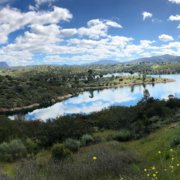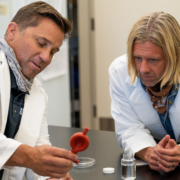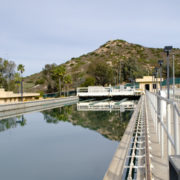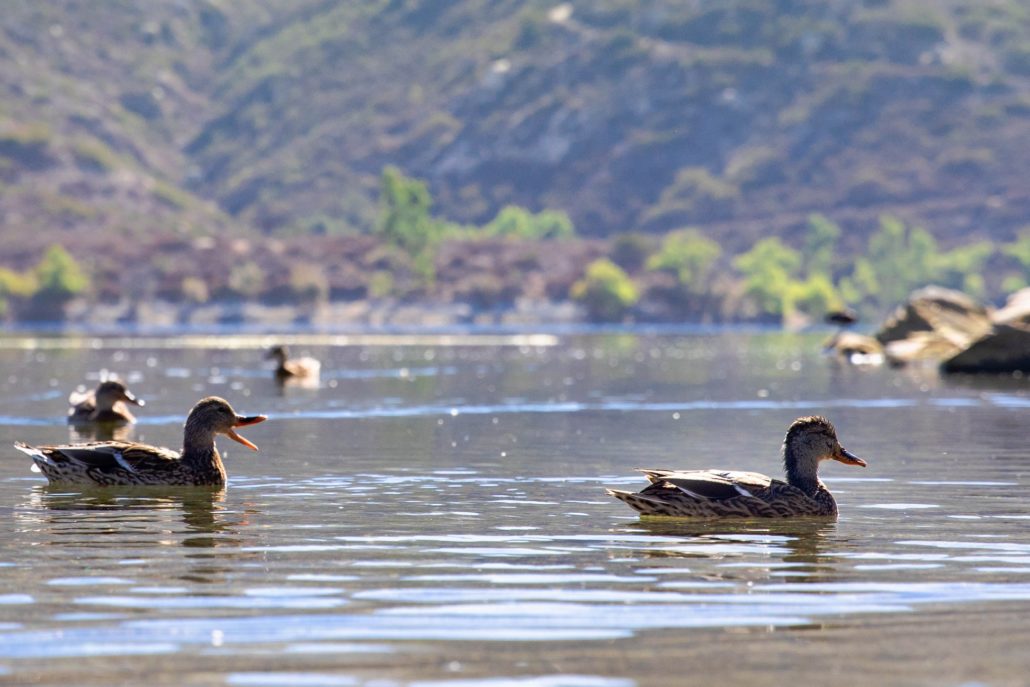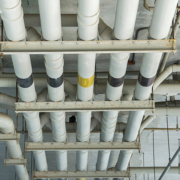Water News Network Top Stories of 2020
The Water News Network top stories of 2020 reflect the San Diego region’s interest in water conservation, the environment and efforts to diversify water supply sources. But the year was dominated by the coronavirus pandemic, which impacted water infrastructure and operations.
As one of essential sectors of the economy, the water and wastewater industry took added COVID-19 precautions. The essential employees of the San Diego County Water Authority and its 24 member agencies worked to ensure the continued safety and reliability of the region’s water supply. In some cases, that meant sheltering-in-place, which employees of the Claude “Bud” Lewis Carlsbad Desalination Plant did in March. For agencies operating multiuse recreational facilities, such as Lake Jennings, the pandemic also caused frequent schedule changes.
To reassure users about the safety of the water supply, the Water Authority and its member agencies shared a series of videos with the public, featuring Switchfoot’s Jon Foreman, to let people know they can “Trust the Tap.”
Top Stories of 2020
COVID-19
Reservoirs and lakes operated by water agencies in San Diego County were closed or had varying schedules due to the coronavirus pandemic. The impact of the pandemic on recreational facilities in the region was the most viewed story of 2020.
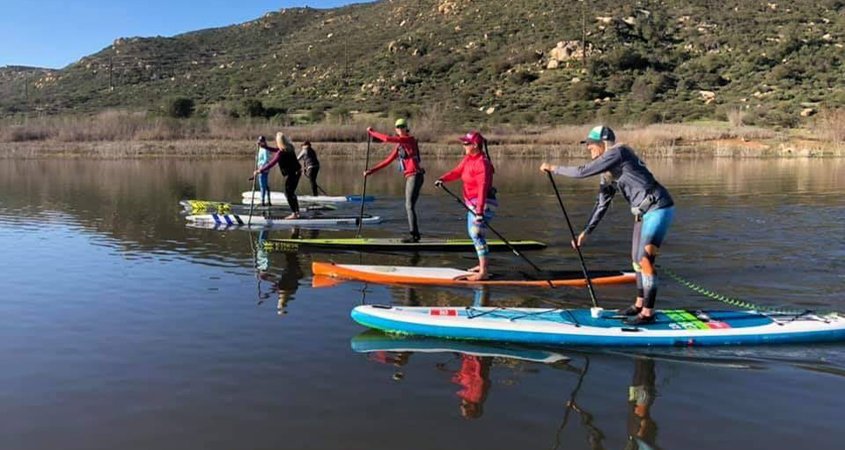
Paddleboarders enjoy Lake Hodges before the City of San Diego closed the lake due to the coronavirus pandemic. Photo: City of San Diego
Reservoirs, Lakes Remain Closed to Fishing Due to COVID-19 Pandemic
The City of San Diego’s reservoirs and lakes are closed due to the coronavirus pandemic. The city closed the reservoirs to the public on March 18 to protect the public and minimize the spread of the COVID-19 virus. The nine water supply storage reservoirs are operated by the City’s Public Utilities Department.
Popular overnight campsites remain open at Santee Lakes, owned and operated by the Padre Dam Municipal Water District.
“Camper well-being is important to us and Santee Lakes didn’t want to displace people,” said Melissa McChesney, Padre Dam communications manager. She said that includes long-term campers who spent winter at the lake.
At Lake Jennings, Recreation Manager Kira Haley says eight volunteers continue to live and work from their campground homes in recreational vehicles and campers. She said their days remain “pretty typical” even though they see more wildlife and not people.
Environmental Stewardship
COVID-19 played a part in the second most viewed Water News Network story in 2020.
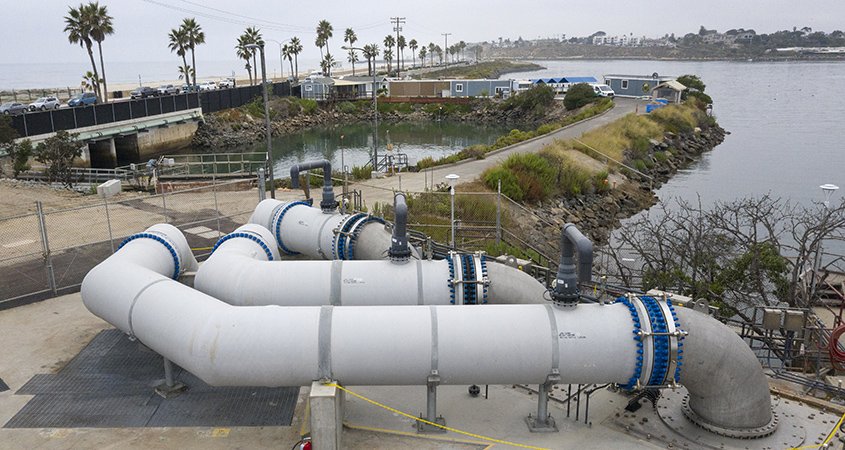
Three new fish-friendly seawater intake pumps commissioned at the Claude “Bud” Lewis Carlsbad Desalination Plant, are among the most environmentally advanced intake pumps in the world. The pumps are part of a broader effort to ensure the long-term health of the marine environment near the Plant, which sits on the shores of Agua Hedionda Lagoon. Photo: San Diego County Water Authority
New Fish-Friendly Seawater Intake Pumps at Carlsbad Desalination Plant
July 22, 2020
New fish-friendly seawater intake pumps recently commissioned at the Carlsbad Desalination Plant are among the most environmentally advanced intake pumps in the world.
The three intake pumps, manufactured by Indar, are part of a broader effort to ensure the long-term health of the marine environment near the Claude “Bud” Lewis Carlsbad Desalination Plant, which sits on the shores of Agua Hedionda Lagoon.
Installation of the new intake pumps is part of a phased program to replace the existing seawater intake and discharge facilities with state-of-the-art technology to protect marine life that wasn’t available when the plant was operating with source water from the Encina Power Station. The closure of the power station in December 2018 led to temporary intake-discharge operations until the new intake pumps came online. The next steps include adding new intake screens, designed to prevent any sea-life larger than 1 millimeter (thicker than a credit card) from entering the plant.
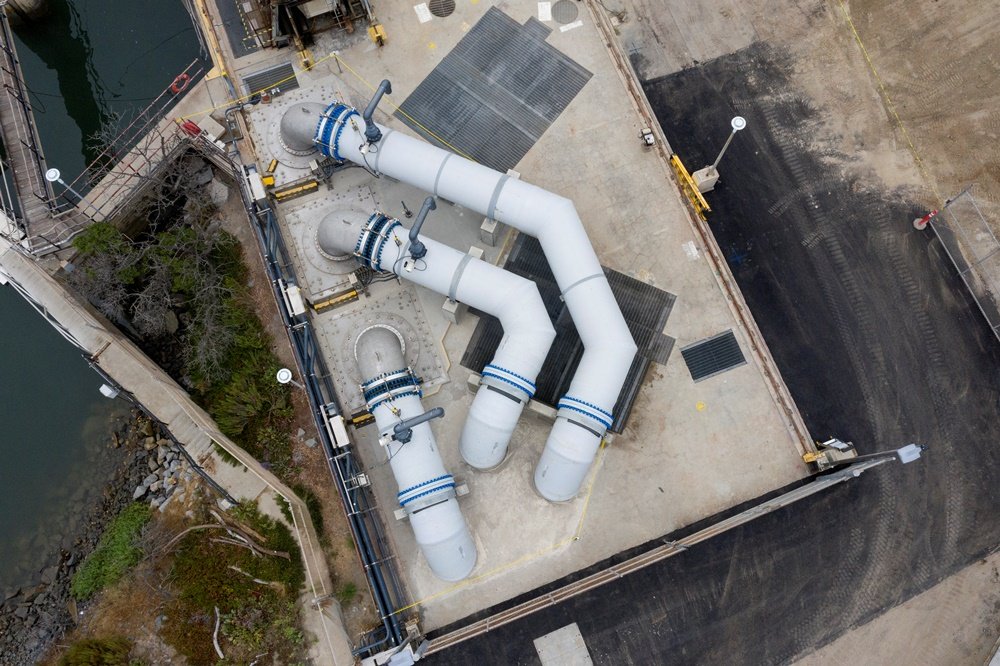
The new intake screens are the final part of upgrades, which when complete in 2023, will make the Carlsbad Desalination Plant the first desalination facility in California to comply with the 2015 California Ocean Plan Amendment, which is among the most advanced sea-life protection measures in the world. Photo: San Diego County Water Authority
Essential work during COVID-19 pandemic
The work to complete the construction and commissioning of the new fish-friendly seawater intake pumps was part of the essential work allowed under California guidelines during the COVID-19 pandemic. The contractor, Kiewit–Shea Joint Venture, worked in accordance with guidelines adopted by the State Building and Construction Trades Council and approved by Governor Gavin Newsom for essential construction. The contractor worked uninterrupted to complete the project per the June 30, 2020, deadline set by the Regional Water Quality Control Board without any health or safety violations.
Recycled Water
The groundbreaking for the Pure Water Oceanside project was the third most read story of 2020 on the Water News Network.
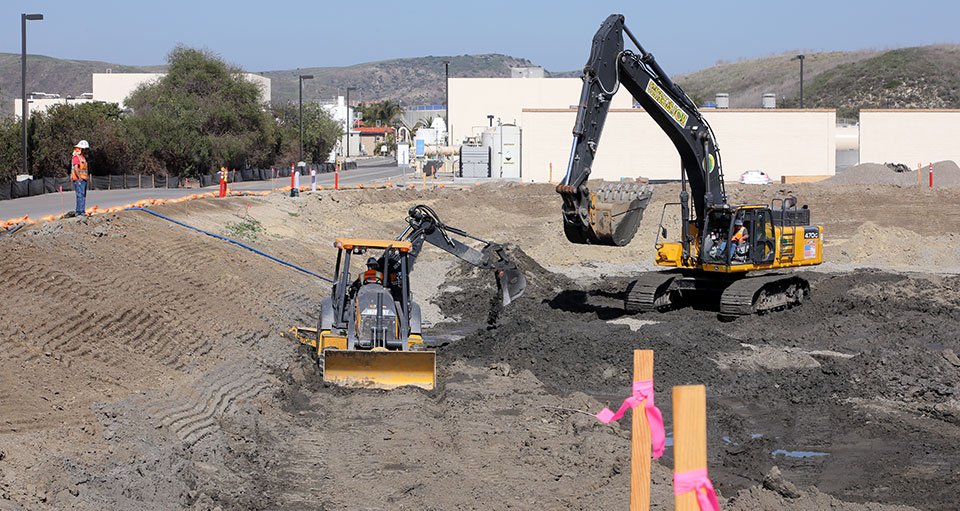
Construction is underway on the $67 million Pure Water Oceanside project, which is scheduled to be completed in 2021. Photo: San Diego County Water Authority
First Advanced Water Purification Facility in San Diego County is On the Map
City of Oceanside officials and regional water industry leaders gathered today to break ground on Pure Water Oceanside, the first advanced water purification facility in San Diego County. The $67 million project – scheduled to be completed in 2021 – will purify recycled water sourced from the San Luis Rey Water Reclamation Facility.
“Today, we put Pure Water Oceanside on the map and are one step closer to achieving the goal of greater water-independence for our city, residents and businesses,” said Cari Dale, Oceanside’s water utilities director. “This future-focused project will provide multiple benefits by reusing our water resources to their full potential.”
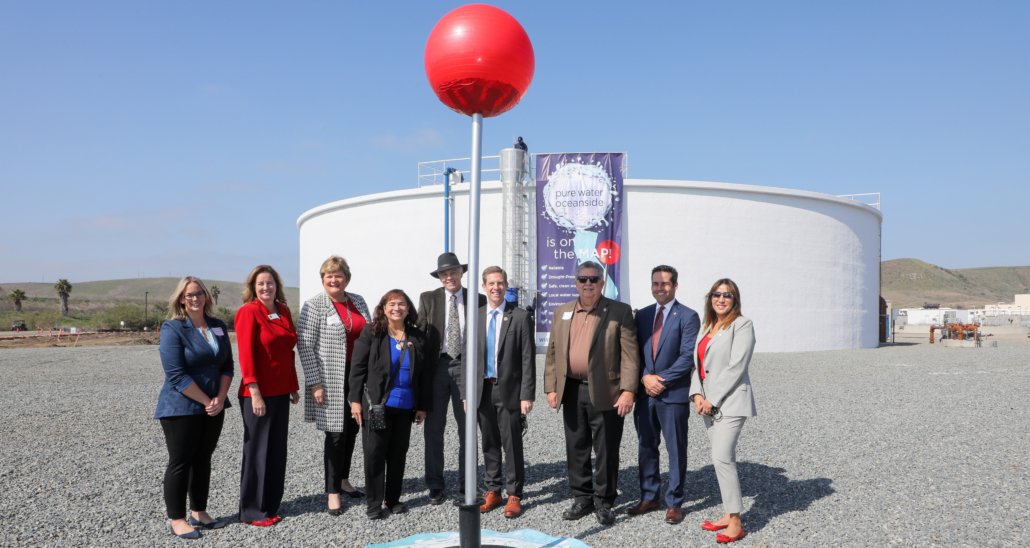
City leaders and water experts placed a giant Google Maps “location pin” into the ground at the San Luis Rey Water Reclamation Facility, which marked that the new recycled water project is now officially on the map. Photo: San Diego County Water Authority
Reducing dependence on imported supplies
The local project will reduce Oceanside’s dependence on imported water by more than 30%. The purification process is inspired by the natural water cycle and reduces the amount of recycled water discharged into the ocean.
The project is partially funded by the Local Resources Program through the San Diego County Water Authority and Metropolitan Water District of Southern California.
“The tremendous conservation focus, water infrastructure planning and investment by the Water Authority and its 24 member agencies has put our regional supplies in solid standing,” said Water Authority General Manager Sandra L. Kerl. “The mission of providing reliable water supplies to San Diego County can be likened to a puzzle; there are many pieces that fit together to create an overall solution. Our next increment of supply in the San Diego region is from potable reuse projects.”
Water Reuse and Recycling Top Stories in 2020
Other top stories in 2020 covered by the Water News Network included updates on several water reuse and recycling projects, including:
Construction of Phase 1 of the Pure Water Program is scheduled to begin in early 2021. Phase 1 will include a full-scale, 30-million-gallon-per-day Pure Water Facility that will use the five water purification steps modeled at the Demonstration Facility.
The East County AWP will be one of the first potable reuse projects in California to use new reservoir augmentation regulations. The program will meet up to 30% of East San Diego County’s drinking water demands, almost 13,000 acre-feet of water per year, and eliminate the discharge of 15 million gallons of partially treated wastewater into the Pacific Ocean.
The Santa Margarita River Conjunctive Use Project is a joint project with Marine Corps Base Camp Pendleton, and will eventually supply about 30% of the Fallbrook Public Utility District’s water, and virtually all of Camp Pendleton’s water.

